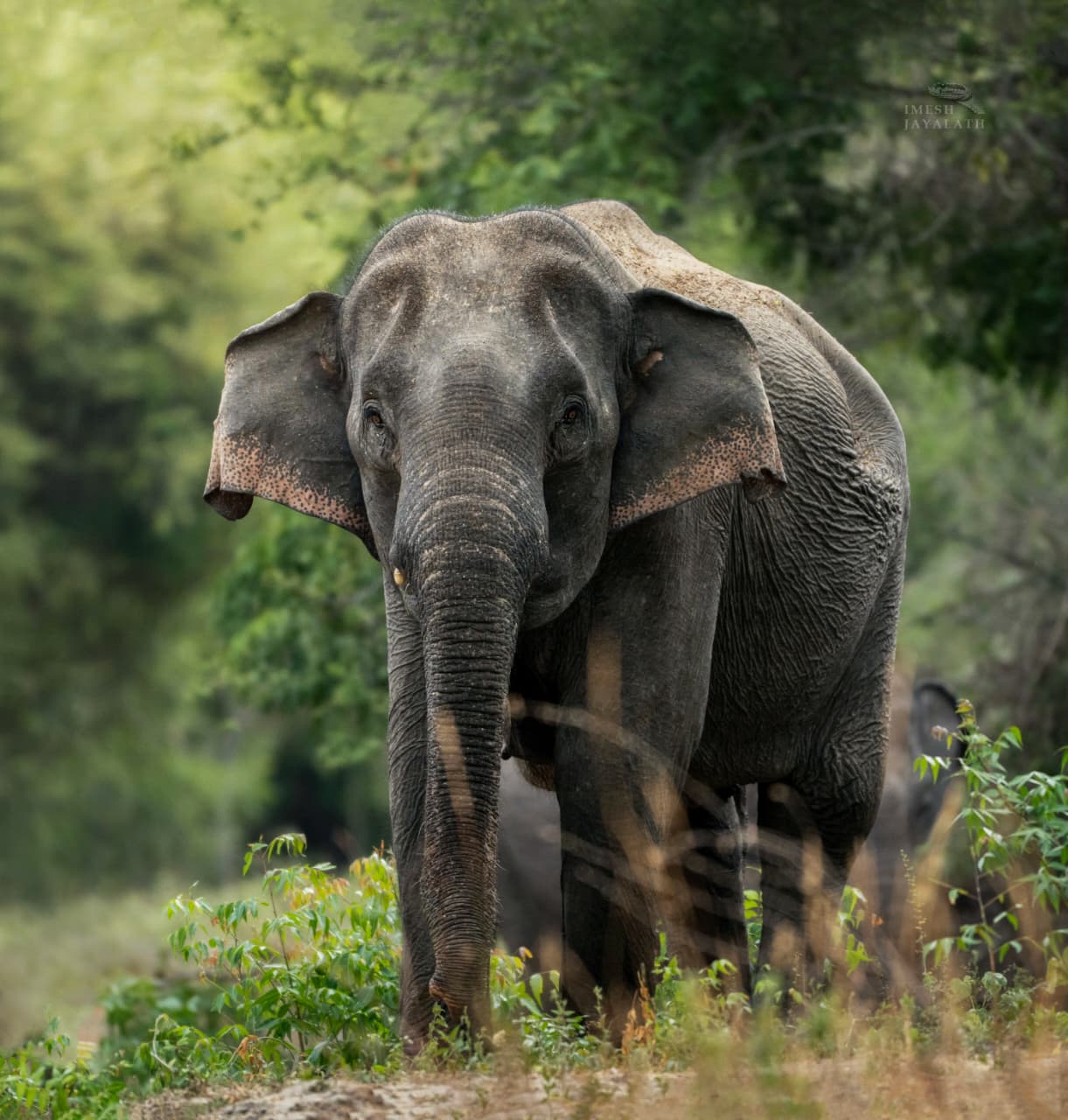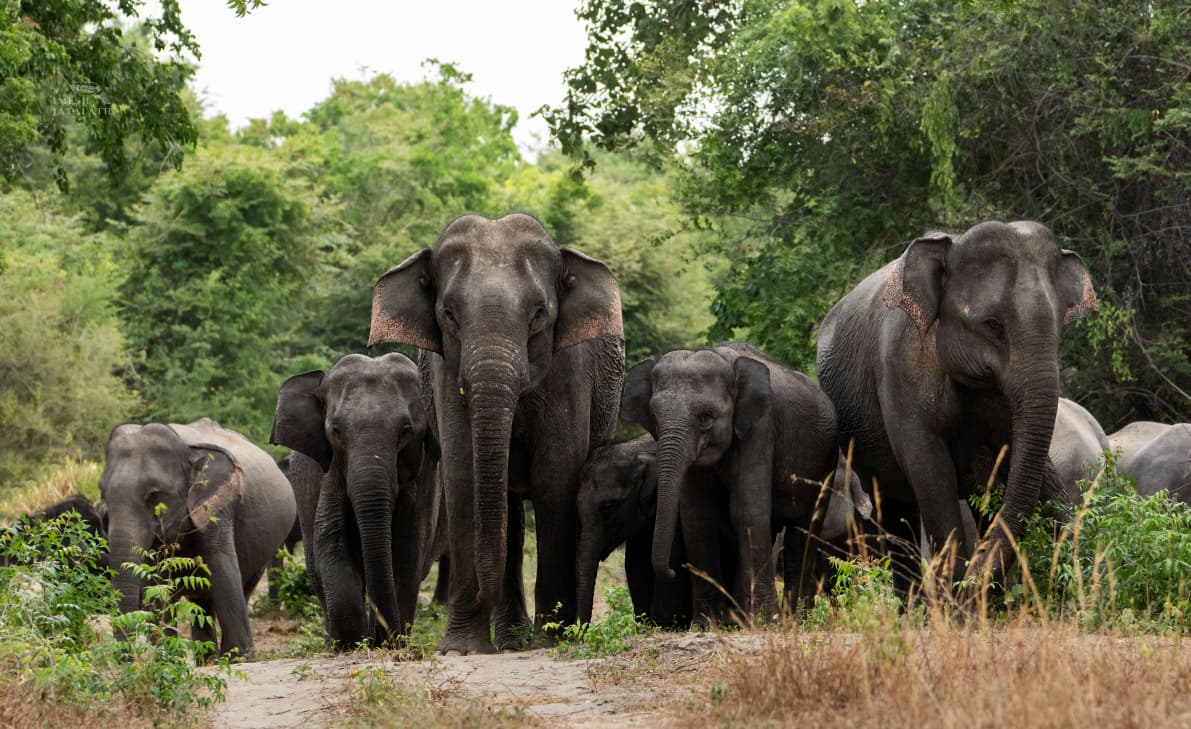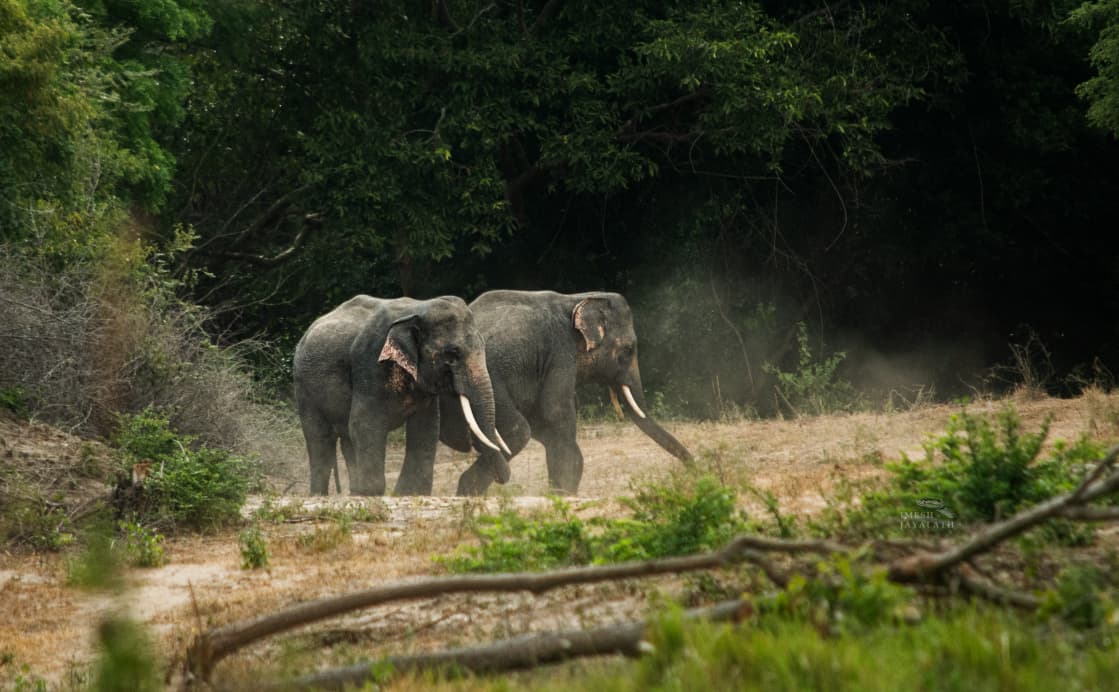
Contributor

Sri Lankan elephant
The Sri Lankan elephant is the largest of all Asian elephants, standing between 2 and 3.5 meters tall and weighing up to 5,500 kilograms. Its dark skin often shows lighter patches on the ears, trunk, face, and belly. Most males do not grow tusks, and only about 7% of them carry tusks that can reach nearly 1.8 meters in length. Females are smaller and usually move in small family groups with their calves, while males often live alone.

Sri Lankan elephant
These elephants mainly live in Sri Lanka’s dry zone, found in places such as Yala, Udawalawe, Wilpattu, and Minneriya National Parks, though most actually roam outside protected areas. They eat around 150 kilograms of plants each day, feeding on grasses, shrubs, leaves, and even crops. Their flexible behavior is shown during the dry season when hundreds gather around water bodies like Minneriya, creating the famous “elephant gathering.” Communication happens through touch, smell, and at least fourteen types of calls, some too deep for humans to hear.

Sri Lankan elephant
Sri Lanka is home to the highest elephant density in Asia, but their survival is under great pressure. Expanding farms and settlements take away their land, often leading to conflict with people. Each year, more than 300 elephants die, mostly due to clashes with humans. Conservation programs now focus not only on protecting them in national parks but also on finding ways for elephants and people to share the land. Places like Pinnawala Elephant Orphanage and Udawalawe Elephant Transit Centre care for orphaned and injured animals, giving them a chance to return to the wild.